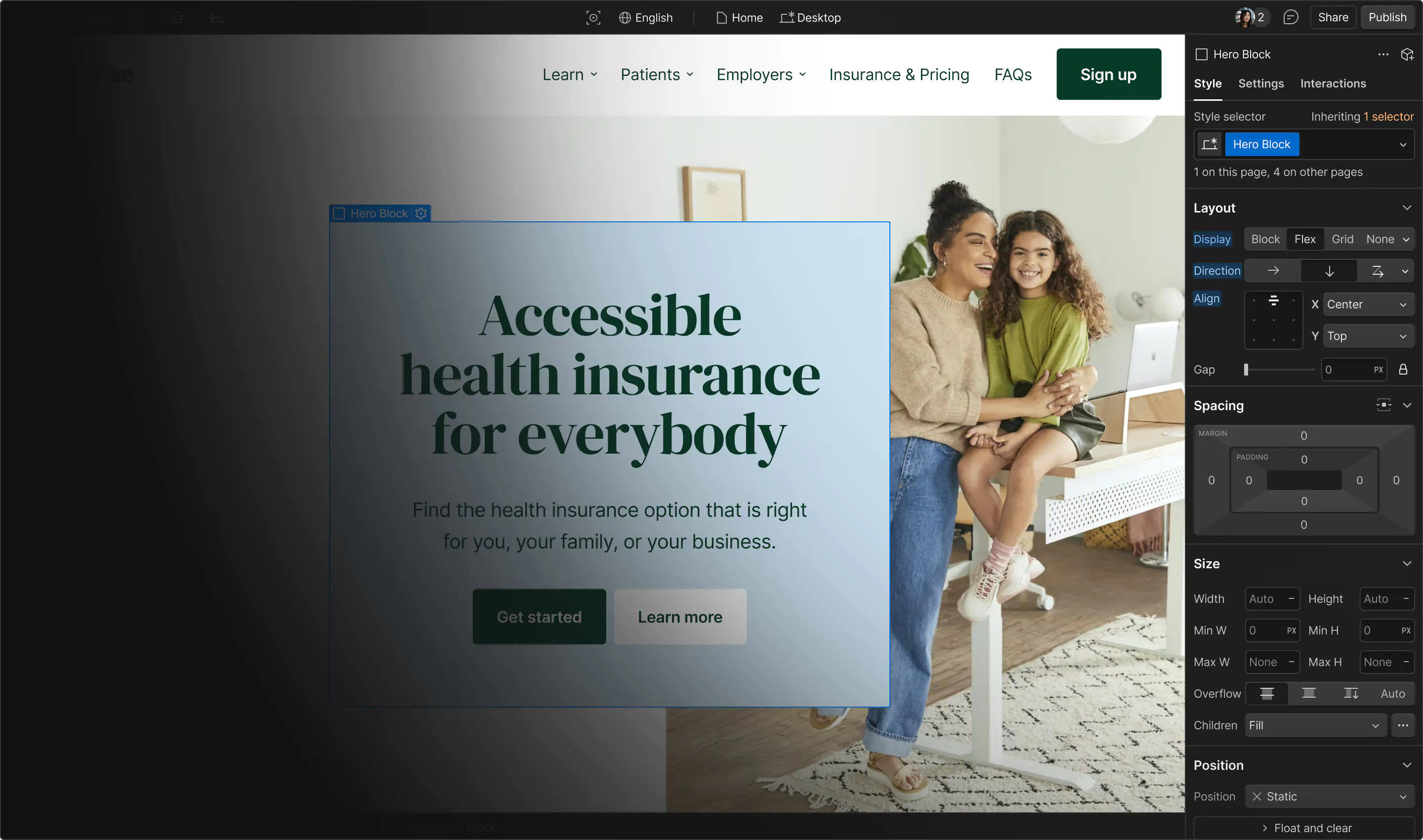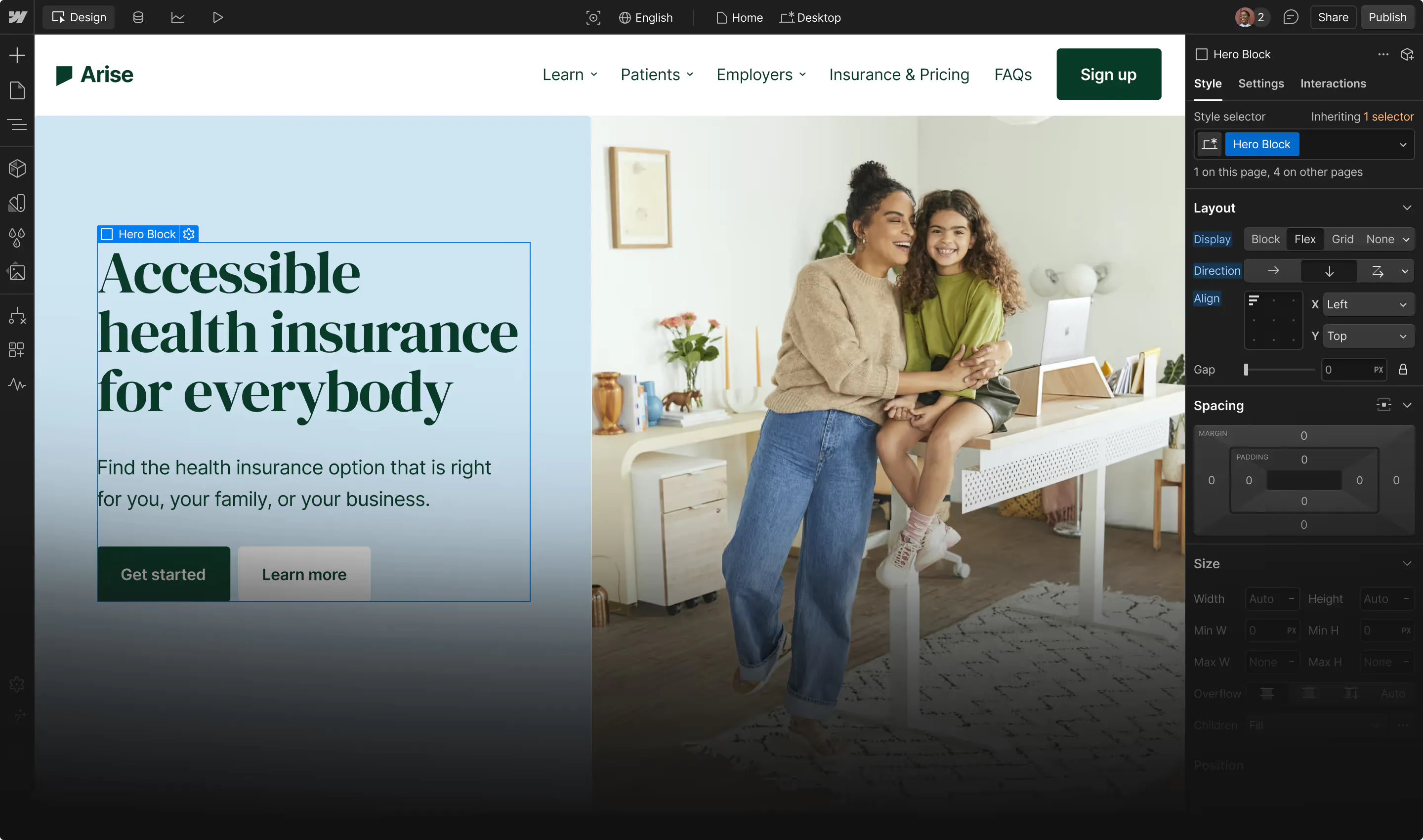If you zoom into a logo or icon that stays perfectly sharp, you’re likely looking at an SVG.
SVG, which stands for scalable vector graphics, is a file format that displays crisp visuals at any size. Unlike JPEGs or PNGs, SVGs are code-based, meaning they’re smaller in file size and scale beautifully on any screen. You can even animate or style them with cascading style sheets (CSS).
Given their many benefits, it’s worth considering how to use SVG files for your website. Read on to understand what they are and how to implement them.
What are SVG files?
Not all image files are built for web browsers, but SVGs are. SVG files are lightweight, resolution-independent, and perfect for modern browsers. They’re an image format based on XML, a markup language similar to HTML. Instead of using pixels like JPEGs or PNGs, vector graphic formats use mathematical shapes and paths to describe images.
That means they can scale up and down without losing quality, making them ideal for responsive design. You can use SVGs for logos, icons, and illustrations on your web design and remain confident that they’ll look great on every screen.
Why are the benefits of SVG files in web design?
SVG images look sharper, but they also overcome design and performance roadblocks on the web. Here’s a closer look at their benefits.
1. Clarity
Pixel-based images, like JPEGs or PNGs, can look blurry or distorted when scaled, especially on high-resolution displays like retina or 4K screens. SVG formats, on the other hand, scale perfectly without losing sharpness, whether they’re tiny icons in a menu or full-screen illustrations.
This is especially useful for icons, logos, and other design elements that need to look sharp across devices. Using an SVG means you don’t need to create multiple versions of an image for different screen sizes.
2. Versatility
You can style and manipulate SVG images as you would HTML elements, which gives you more creative control over your site’s design. For example, you can target them with CSS for color changes or animations and use JavaScript to make them interactive.
Instead of exporting dozens of image versions for different colors, hover states, or sizes, you can work with a single SVG format and control its appearance through code. This means fewer files to manage and faster updates.
3. Smaller file sizes
SVGs are text files that describe how to draw an image. They’re often much smaller than bitmap formats like PNG or JPEG, especially for simple or flat graphics.
Faster websites directly improve user experience, search engine optimization (SEO) rankings, and conversion rates. Smaller file sizes mean snappy page loads, which satisfy visitors who want information quickly. Page loading speed also influences bounce rates because visitors will likely explore sites that respect their time.
This matters even more for mobile users who may be on slower connections. You can improve performance across the board by replacing bulky image formats with lightweight SVGs. SVGs also compress well, keeping your website fast without compromising image quality.
4. Accessibility and inclusivity
Accessibility is essential to building inclusive websites. Unlike raster images (which use pixels to make up a larger image), SVGs contain semantic information like titles, descriptions, and ARIA labels in the file. Screen readers and assistive technologies can interpret this information to describe visuals to people with low or no vision.
Accessible SVGs ensure that as many people as possible can understand your content. Accessible design makes a major difference in how users navigate and engage with your site. It’s especially important for icons, data visualizations, and interactive elements with minute details — all elements you want users to understand clearly.
It also future-proofs your site against accessibility audits and meets Web Content Accessibility Guidelines (WCAG) standards, which many organizations are now legally required to meet. Designing with accessibility in mind supports a broader audience and shows that you value thoughtful, user-centered design.
How to create and use SVG files
Generally, you can create SVGs manually using vector design tools or by converting raster images like JPEGs and PNGs. Here’s how it works.
Creating SVG files manually
In this method, you design original graphics using vector-based software like Figma, Adobe Illustrator, or Inkscape. These tools allow you to create shapes, lines, icons, or illustrations using vectors, which you can export as SVG files.
Manual creation gives you complete control over the visual style and technical quality of your SVGs. You can edit the design to be as simple or detailed as you want while keeping file sizes small without sacrificing clarity and scalability.
How it works
Start with a blank canvas in a design tool and build the graphic using scalable shapes instead of pixels. Once you’re done, you export the design as an SVG.
For example, you might create a custom set of navigation icons for your website using Figma. Build them manually as vectors, then export each as an SVG. This way, you control the exact line weight, corner radius, and spacing of each image. You can also change the icon color using CSS instead of uploading multiple image versions later.
Converting existing images into SVGs
This approach involves turning raster formats into vector images using auto-tracing tools. These tools analyze the shapes and colors in a bitmap image and recreate them using scalable vector paths.
Sometimes, you might not have access to the original vector file for a logo or graphic. Converting an image to SVG lets you take an existing asset and make it web-friendly. It’s handy to preserve a design without remaking it from scratch.
How it works
A conversion tool scans the image and generates vector-based paths based on color and contrast. While the result isn’t always perfect, especially with complex or detailed photos, it works well for simple graphics like logos or icons. You can refine the converted SVG afterward to clean up any unnecessary elements and make it more efficient for web use.
For example, you might have a company logo saved as a high-resolution PNG. Instead of designing it all over again, you can upload it to a tool like Adobe Illustrator and use the trace feature to convert it into an SVG. Then, you can resize the logo freely for headers, footers, or even print without it looking blurry.



















Get our 100 video course on web design — for free
From the fundamentals to advanced topics — learn how to build sites in Webflow and become the designer you always wanted to be.
Top 3 programs to open and edit SVG files
The right tools can make SVG-related work fast and flexible. Here are three Webflow apps that make it easier to open, edit, and style SVG files directly within your site.
1. SVG Import
SVG Import is a third-party app by Flowcraft designed for Webflow. It allows you to paste raw SVG code directly into your site and render it as a native, fully editable element within the SVG document object model (DOM). This lets you easily manipulate and style SVGs using standard web design tools.
Webflow has a default 10,000-character limit on SVG files. SVG Import removes the limit, making it easier to use detailed images like illustrations, layered logos, or animated graphics. It also ensures full fidelity to preserve your original styles and structure.
Features:
- Supports all valid SVG formats, including gradients and animation-ready paths
- Binds CMS colors to SVG shapes for data-based visuals
- Maintains a clean, editable DOM structure that you can style with CSS
2. SVGFlow
Fine-tuning SVGs usually means jumping between design software and your site editor. SVGFlow, by Azwedo, lets you adjust the appearance of SVG icons directly inside Webflow’s visual design platform. You can change the colors, size, and stroke width without external design tools.
For example, you can match icons to your brand colors without reexporting or reuploading elements. It provides more design flexibility, which is especially useful when working on responsive or component-based layouts.
Features:
- Edit SVGs in real time directly inside your Webflow project
- Support for multicolor icons and logos
3. Icon Drop
Finding, customizing, and organizing icons can be time-consuming, especially when working across multiple projects. Icon Drop is a third-party app from Saddle designed with Webflow. It provides access to over 20,000 SVG icons from open-source libraries, with one-click insertion and editing directly within Webflow.
You can browse icon sets, paste SVGs directly from Figma, and edit inner paths or colors inside Webflow. This makes it excellent for websites that need quick updates. You can even animate paths or target specific elements within each icon, making your web design more interactive.
Features:
- 20,000+ icons from eight open-source libraries
- Filter between icon styles (line, solid, etc.)
- Share and reuse icon sets across Webflow projects
How to add SVG files to Webflow projects
Adding SVG files to your Webflow project gives you full control over how graphics render on your site. Once uploaded, SVGs behave like any other asset in Webflow, and you can easily drop them into your layout, adjust their position, and style them to fit your design.
If your SVG contains interactive elements or needs animation, you can embed the raw SVG code directly using the Embed component. Then, you can animate paths or apply hover states using Webflow’s Interactions panel.
Courses like “Webflow 101” and the “Interactions & animations course” on Webflow University provide in-depth tutorials on embedding and animating SVGs. You can also learn how Figma works with Webflow if you’re looking to further refine your design process.
Shape your web design with scalable SVGs
SVGs offer excellent flexibility and performance without compromising your website’s aesthetic. With images looking sharp on every device and loading quickly thanks to compressed file sizes, you can improve the user experience with relatively low maintenance.
You can enhance your web design’s visuals even more with Webflow. From uploading and embedding SVGs to customizing them with in-house tools, you have complete control over how your graphics appear and behave in Webflow.
Start designing responsively and creating standout websites — all in one platform.

Build websites that get results.
Build visually, publish instantly, and scale safely and quickly — without writing a line of code. All with Webflow's website experience platform.






























